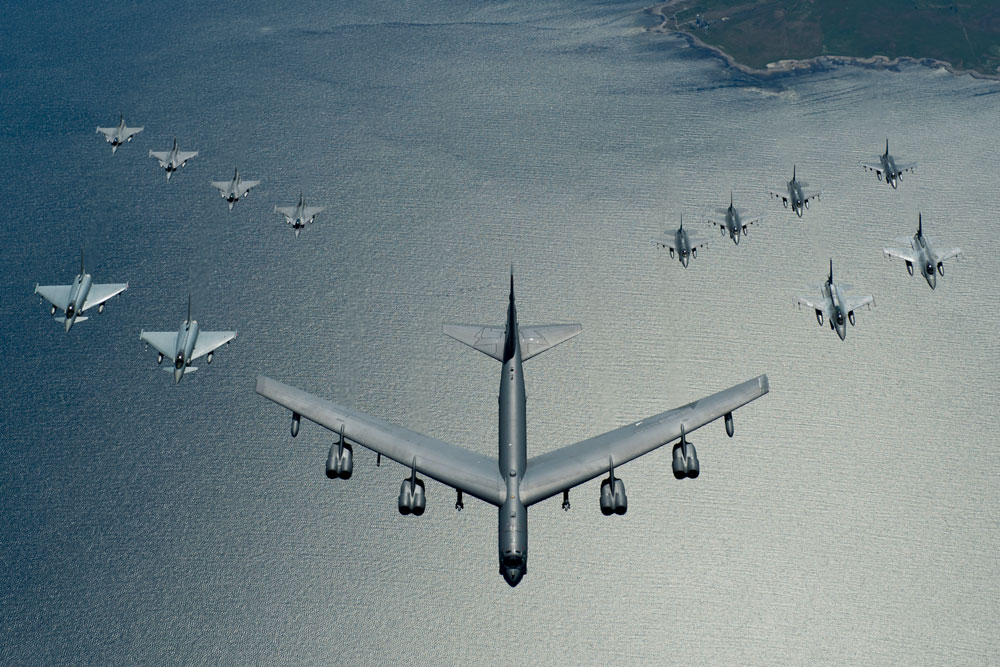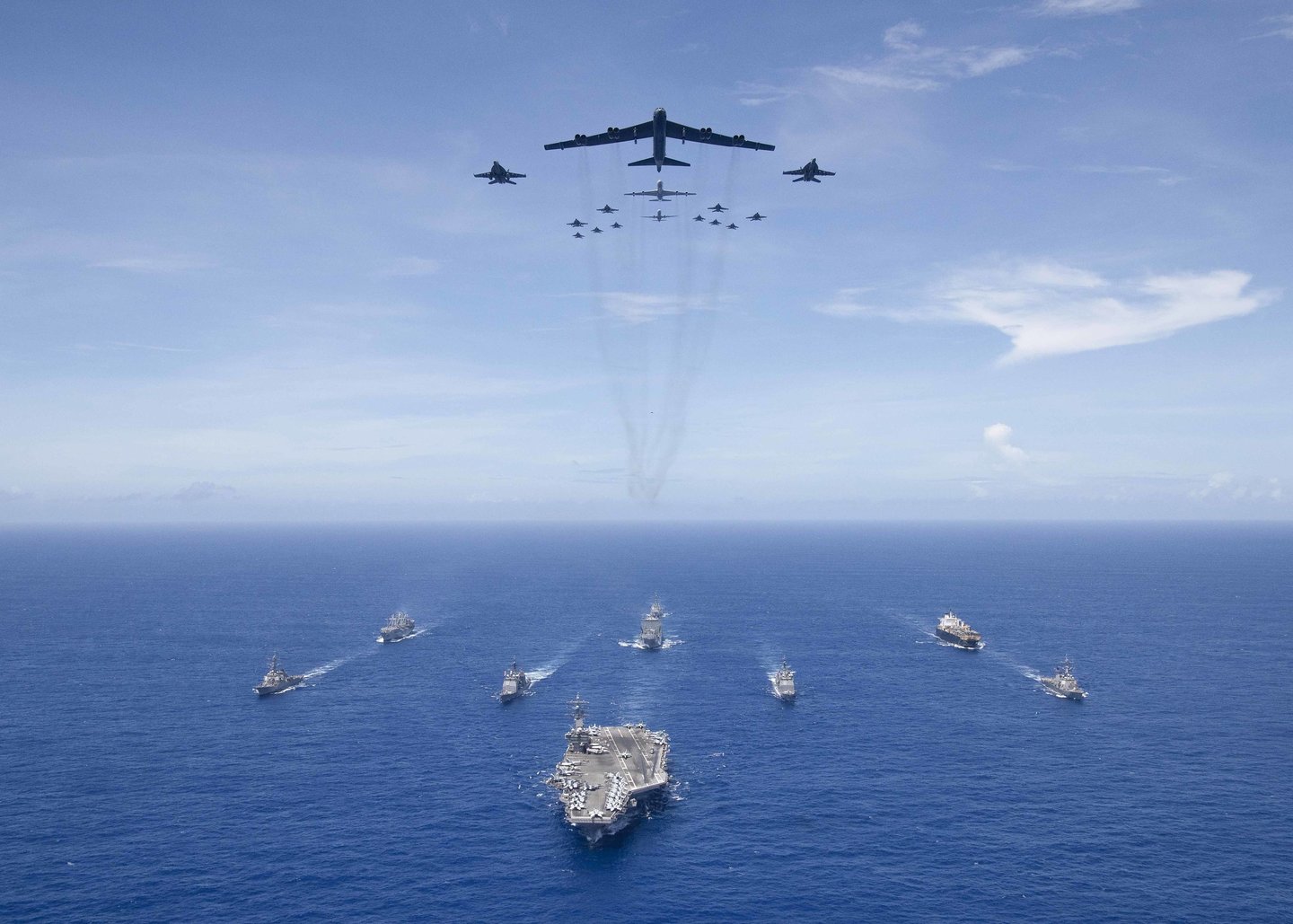AIR
The long reign of the B-52
In service continually since the 1950s, the B-52 is the US Air Force’s king of the skies, having operated in almost every US conflict since it first took flight. Harry Lye looks back on the history of the Stratofortress.



// Image: US Air Force
The B-52 Stratofortress entered into service in the 1950s. With the Cold War in full swing, the bomber became an integral part of the US’ nuclear deterrent as a part of the Nuclear Triad, alongside intercontinental ballistic missiles (ICBMs) and nuclear-armed submarines. Decades later the aircraft is still integral in this role.
Technology has changed radically since then, with the development of advanced anti-air systems, stealth aircraft and more. Somehow, in this rapid pace of change, the B-52 has managed to stay relevant, functional, and critical to operations, fulfilling a wide range of roles from strategic attack and close air support to offensive air and sea operations over the past 70-odd years.
Describing how the B-52 has managed to stay relevant for so long, the US Air Force’s 2nd Bomb Wing told us: “First, the United States needs a long-range strike platform capable of striking targets around the globe and the B-52 has continued to be a workhorse because we have adapted to the changing environment. We also have a reliable plane maintained by top-notch professionals, and flown by a new generation who is eager to remain on the leading edge of tactical employment.”
A service life that spans generations of pilots and engineers
The scale of the B-52’s service is best put into perspective, not by equipment that has come and gone, but rather the people that have served on it. Over its production run the US Air Force bought 744 B-52s and in 2015, the service celebrated three generations of one family flying the B-52, showcasing the scale of the aircraft's life.
Captain Daniel Welch followed in the footsteps of his grandfather who flew the B-52 over Vietnam, and his father who flew the aircraft during the Cold War. The US Air Force described the Welchs as “the embodiment of the continued power and capabilities of the buff, which live on to this day.”
During these three generations of service, the B-52 has shared the skies with a range of other aircraft, fulfilling its tactical bombing role while the fighter jet saw a rapid, successive change. In the time the B-52 has flown the US Air Force has seen F-4 Phantom give way to the F-22 Raptor, and now the Lockheed Martin F-35. The air force aims to fly the B-52 through 2040, just two years after the last F-35 is due for delivery by Lockheed Martin.
“In the time the B-52 has flown the US Air Force has seen F-4 Phantom give way to the F-22 Raptor, and now the Lockheed Martin F-35.”
The Stratofortress not only outlived other planes flying alongside it, but also the service careers of those working with it. In 1973, Staff Sergeant Mark James became a bomb maintainer on a B-52, specifically tail number 0062. In 2019, with the same aircraft still in service, the US Air Force invited James to get back into his old aircraft once again.
James, who began his B-52 carrier as a bomb maintainer was later promoted to crew chief, said of his former job: “When you go out and prepare to launch your own airplane, it’s like getting in your own car. You know exactly what’s wrong with it and what needs a little extra attention, that’s how it was with 0062. She’s real special to me.”
James downed his tools in the late 1980s James but his aircraft has carried on in service, with his role being filled by a new generation of crew chiefs and engineers. The 0062 is now operated by the 2nd Aircraft Maintenance Squadron, and according to Lieutenant Colonel Michael O. Hanson II their work wouldn’t be possible without the generations of pilots and maintainers before them. “He is one of the very shoulders on which we stand on to this day, the reality is, we wouldn’t be here if there weren’t people that had done the right things before us,” Hanson said of James.

The B-52 has been in service since the 1950s. Image: US DoD
Ongoing upgrades keep the B-52 relevant
To stay so relevant for so long the B-52 has seen its fair share of overhauls and refits, which have upgraded nearly every part of the airframe over the years. “For more than 60 years, B-52s have been the backbone of the strategic bomber force for the United States,” states a US Air Force fact sheet. “The B-52 is capable of dropping or launching the widest array of weapons in the US inventory. This includes gravity bombs, cluster bombs, precision-guided missiles and joint direct attack munitions.
“Updated with modern technology, the B-52 is capable of delivering the full complement of joint developed weapons and will continue into the 21st century as an important element of our nation's defences. The Air Force currently expects to operate B-52s through 2050.”
Through all this time the aircraft has maintained a place at the US nuclear triad. As the 2nd Bomb Wing puts it: “Until 2050 we remain a critical part of the nuclear triad and maintain relevance because of our ability to project power.” This position has kept the aircraft in a place of critical importance, even when the missiles and submarines that form part of the nuclear triad are replaced and upgraded.
“These upgrades would see one of the oldest serving airframes equipped with some of the US Air Force’s most advanced technologies.”
These efforts continue into the present day. Last year Raytheon won a contract to upgrade the aircraft’s radar and and allow it to act as a ‘mothership’ for an airborne hypersonic missile test, applying 1950s technology to the world’s newest missile threat. If hypersonic missiles weren’t enough, the air force is also reportedly looking to equip the B-52 with laser-based missile defence systems. These upgrades would see one of the oldest serving airframes equipped with some of the US Air Force’s most advanced technologies.
In the 1960s the Chief of Staff of the US Air Force General Curtis E LeMay said: “I am afraid the B-52 is going to fall apart on us before we can get a replacement for it. There is a serious danger this may happen."
Decades later the sentiment of LeMay’s words still stands. The B-52’s original replacement, dubbed the ‘Next-Generation Bomber’, was scrapped and replaced with the programme to build the B-21 Long-Range Strike Bomber. According to the congressional research service, the US’ new bomber should arrive at some point in the next decade.
“The B-21 is intended to operate in both conventional and nuclear roles, with the capability of penetrating and surviving in advanced air defence environments,” a report on the aircraft says. “It will be capable of operation by an onboard crew or piloted remotely. It is projected to enter service in the 2020s, building to an initial fleet of 100 aircraft.”
Until then the B-52s will continue to form the backbone of the US Air Force’s bombing capabilities. As aircraft designs have changed over the decades, and fighters come and gone, the B-52 has stood the test of time.

The US Air Force expects to operate B-52s until 2050. Image: US DoD